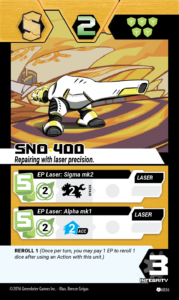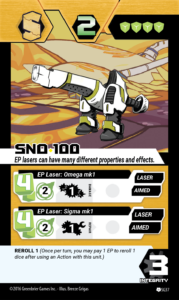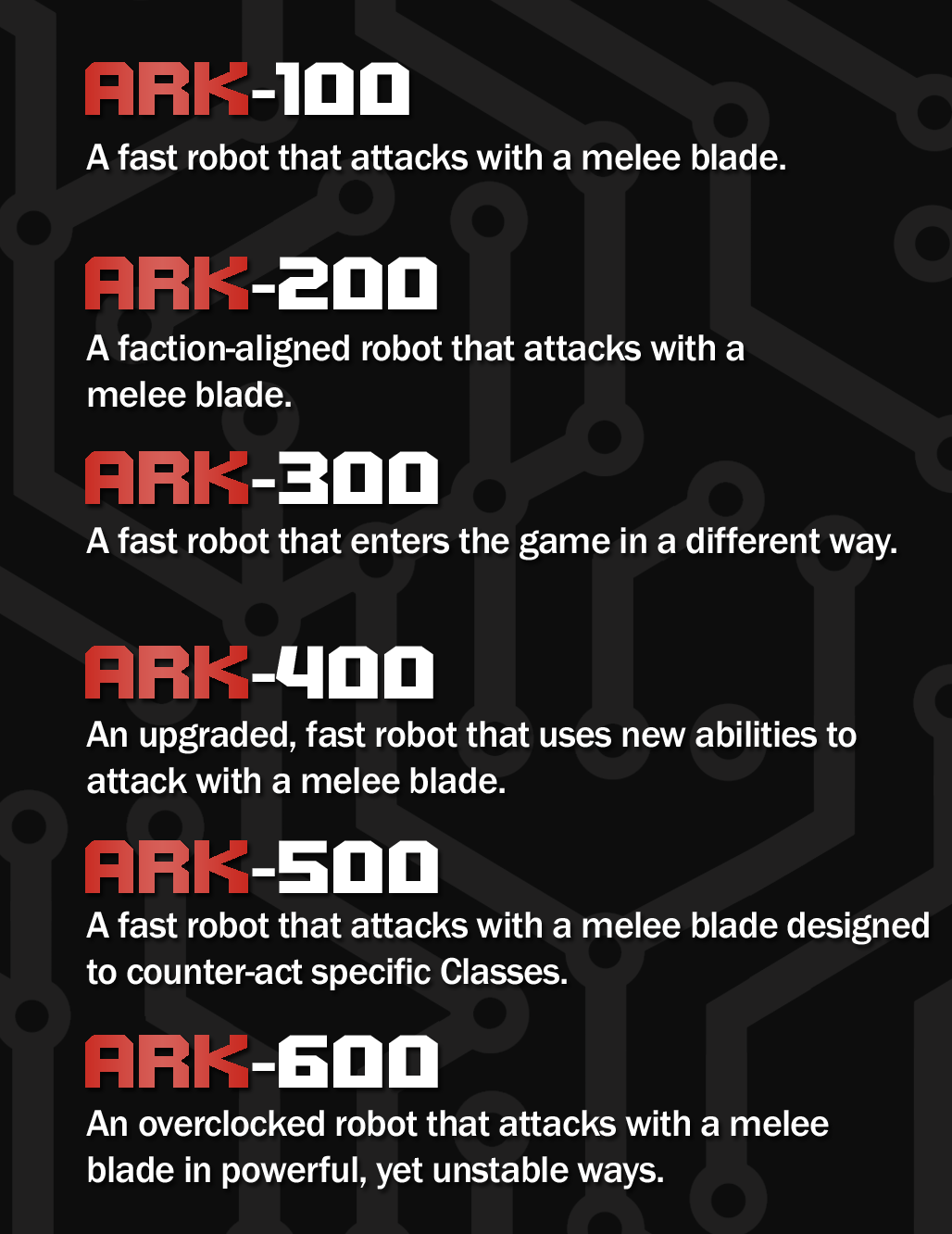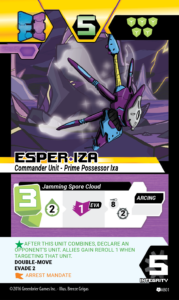What’s with the Robot Names?
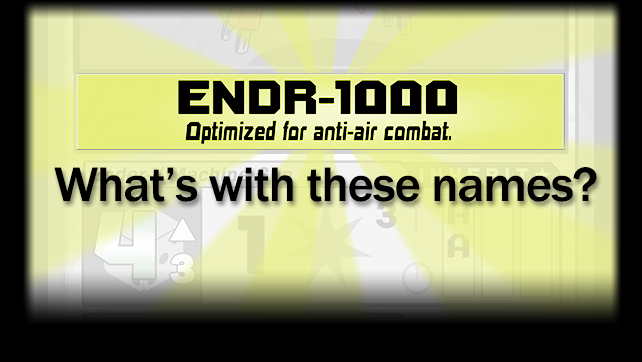
If you’ve known or played A.E.G.I.S. for any amount of time, you’ve noticed our robots’ names (ARK-100, ARM-777, ESPR-4000…) below their images, and probably wondered whether the numbers and abbreviations were completely arbitrary to just sound more robot-y. Well, you’d be correct if you were looking at our early prototypes, where names like “GCL-100” were prevalent and meant nothing. For a long time though, we’ve been working to make the scheme behind the names meaningful for both ourselves as developers and for our players as robot commanders. Today we’ll talk about that process.
What’s in a Name?
First and foremost, the abbreviations in the names are a robot’s Make. Think of it like the model of a car. A robot’s Make sets it apart from all other robots in the same Class, and all robots in that Make function similarly in battle. This allows you to identify what robots you want to use on your team, and how they will interact with other units on the field, whether you are combining them or not. As examples…
All ARK robots are powerful melee units with a theme of powerful sword attacks.
All ESPER units are non-flying E-Class robots with evasion.
All GO robots are focused on pushing attacks, whereas all GET robots are focused on pulling.
All SNO robots have utility lasers, as shown below, and all IPPLs have wide-range energy burn attacks.
And so on and so forth.
More often than not nowadays, we attempt to have the name make sense with what the robot does (see: GO and GET), and we’ll be moving away from more arbitrary abbreviations like SNO, though names that have already been introduced like that one are here to stay.
Can I Get Your Number?
You’ve probably guessed by now that the numbers after the Make are to separate different robots in the Make from each other. This is true, but the meaning behind those numbers isn’t as obviously important, though it is useful to know for assembling your teams.
All Level 1 robots have a 3-digit number designation:
The -100 suffix describes the most iconic and simple robots of a class. For example, the ARK-100 is a basic fast, melee striker. -200 units are faction-aligned -100’s.
The –300 suffix describes robots that have different game-start rules. For example, the SAUR-300 has the Combat Drop ability, allowing it to enter the battlefield on a later turn.
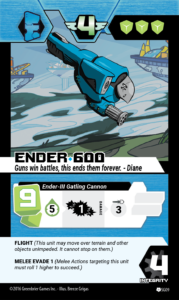 The -400 robots are similar to -100’s, but with a twist. The SSM-100 shoots six missiles at a single opponent, but the SSM-400 shoots three missiles at one opponent, and three at another. What a twist!
The -400 robots are similar to -100’s, but with a twist. The SSM-100 shoots six missiles at a single opponent, but the SSM-400 shoots three missiles at one opponent, and three at another. What a twist!
The -500 suffix designates a robot that’s a specific counter to another class. For example, A-Classes that specialize in destroying S-Class ‘bots would fall under this category.
Finally, -600 units can best be described as overclocked. They’re oddballs, pushing the limits of a class’s core features in terms of design. For example, the ENDER-100 has a basic machine gun, but the -600 iteration has a 9-shot cannon; the ESPER-100 is evasive, but the -600 has Evade 5, meaning most attacks can only hit it on a 6, and only one integrity. These robots are tough to utilize unless you build your team around their unique capabilities.
Certain Commanders have customized their robots, and those each feature a unique number (for example, Ainer’s ARK-150 or Diane’s ARM-777).
Do any basic ‘bots exist beyond the 600’s? Only time will tell…
Combining, By the Numbers
When you combine units, there is a method to the madness. The Makes of each robot determine what they can combine into; an advanced unit must be made up of units that possess the pieces of its name. For example, the SSM-3000 has to be made of an SSM and any G-Class. Certain combined robots feature two names, such as the ESPER-IZA, which must be made up of an ESPER unit and an IZA unit. Units that require two specific types of ‘bot. We chose to use short names for the lower-class units so their names could be put together into cooler, more-impressive ones. Though, robots that still only require one Class still have number designations:
Level 2 robots are always labeled -1000, -2000, -3000.
Level 3 robots cover the -4000, -5000, and -6000 range.
Level 4 robots cover -7000, -8000, and -9000.
As very few Tier 5 robots exist, each has a unique name and number. For example, the ARK-INFINITY is a Tier 5, made of five robots, but only specifically requires an ARK unit.
Mechanical Names
So there you have it. Our naming scheme for A.E.G.I.S. is partially flavorful, being like model numbers of cars, and also mechanically relevant, being used to identify the requirements for combined units. We hope this helps you as you plan out your own teams of robots in the future!
Fight and unite!

